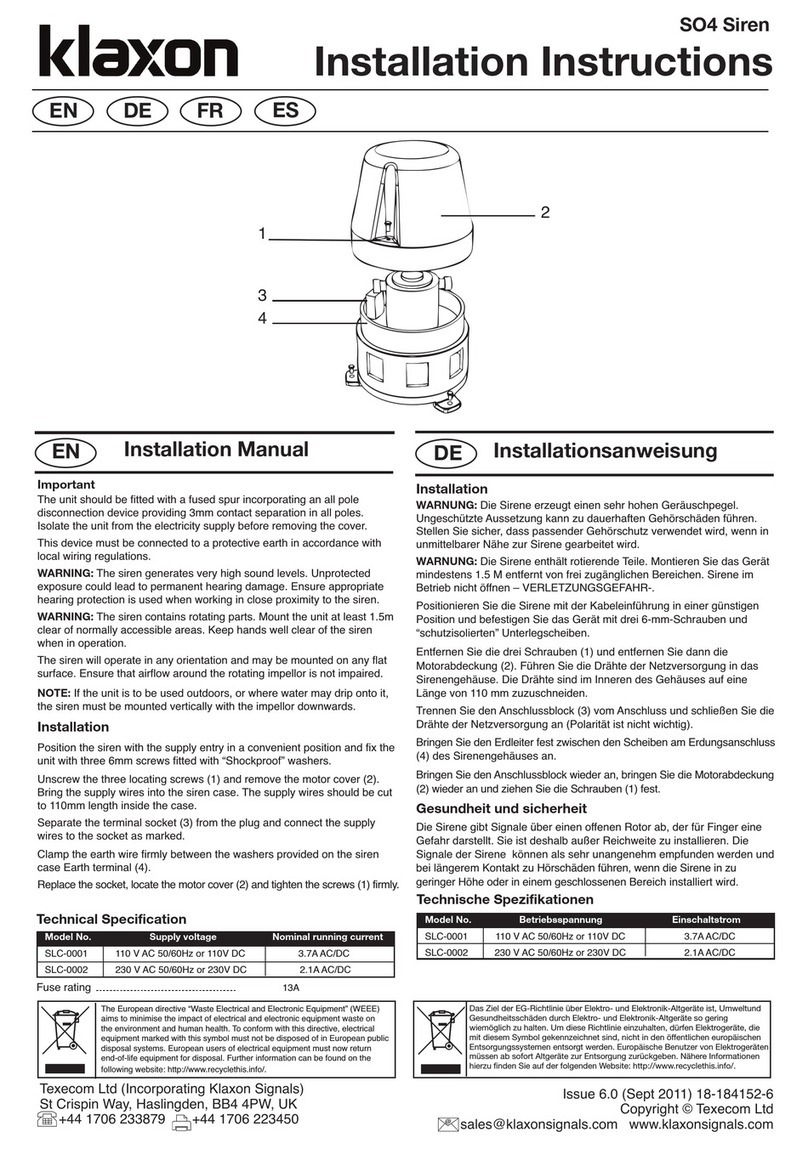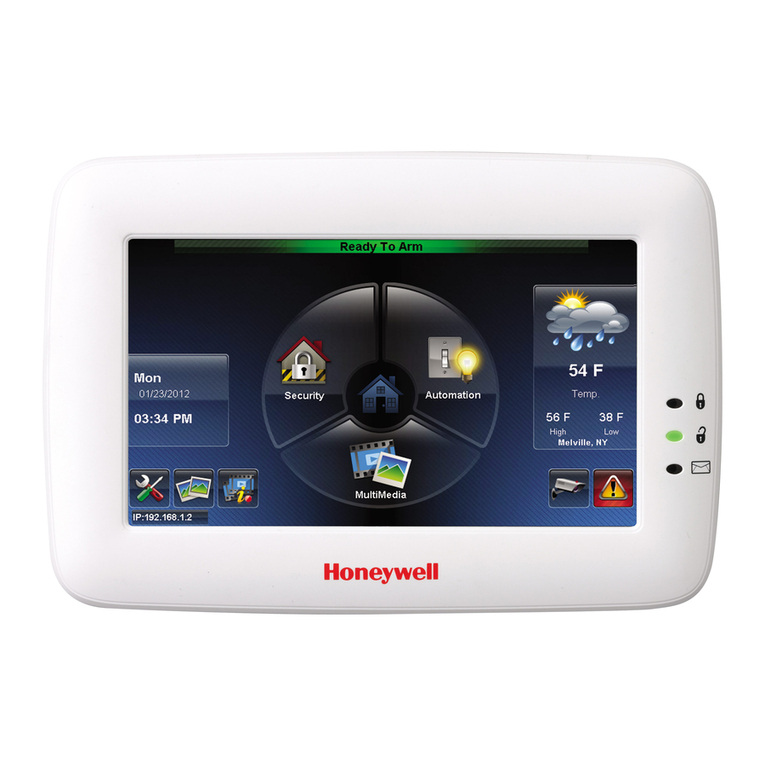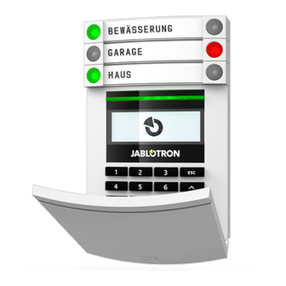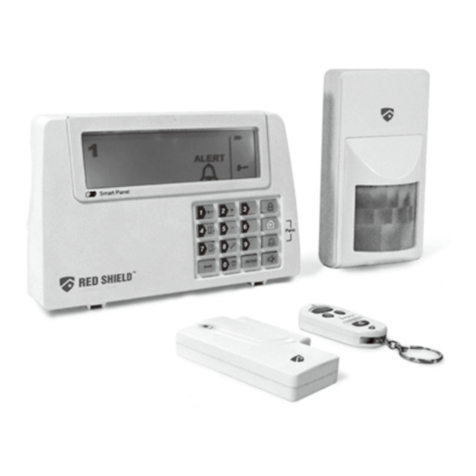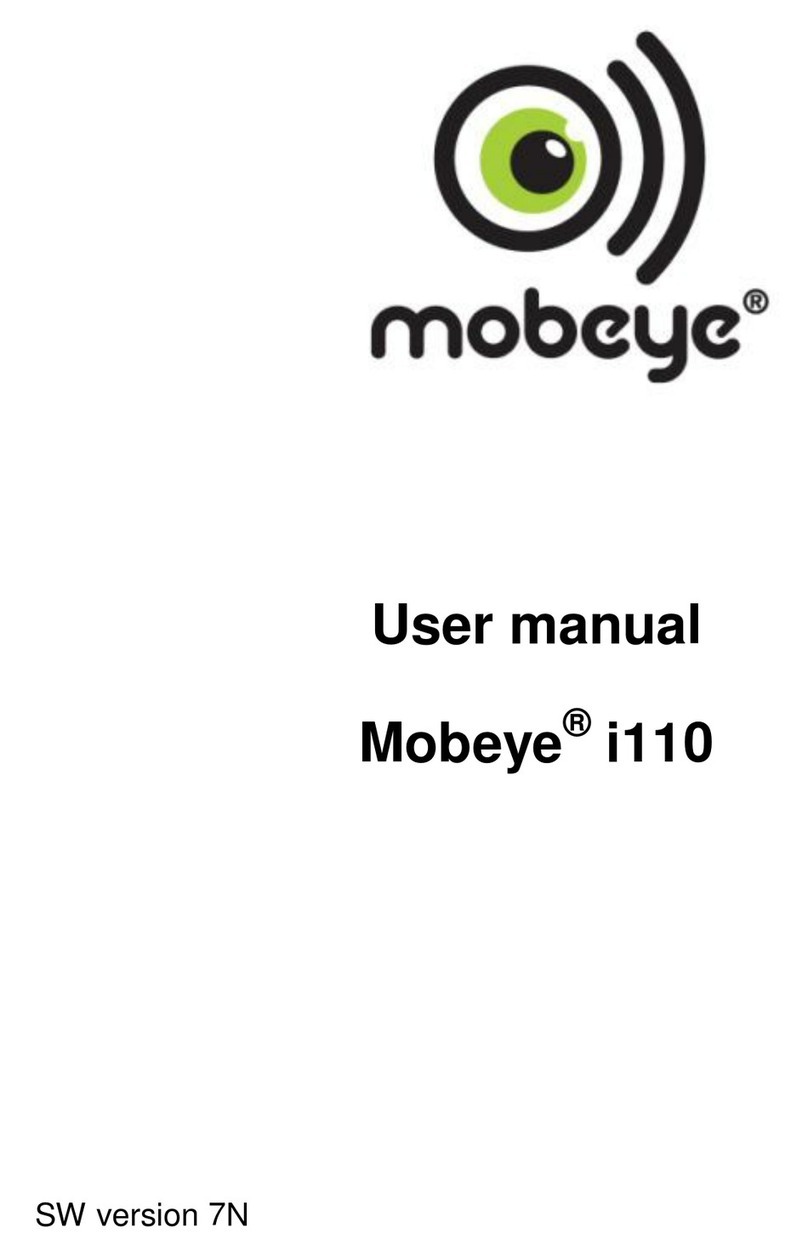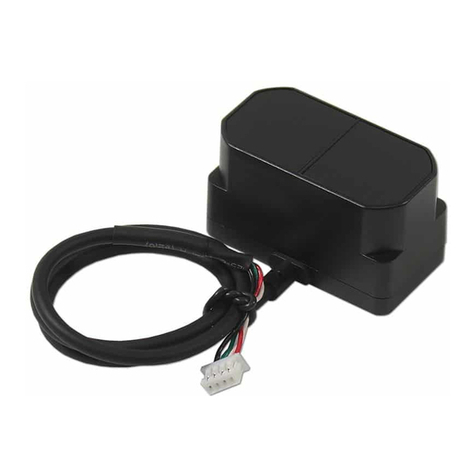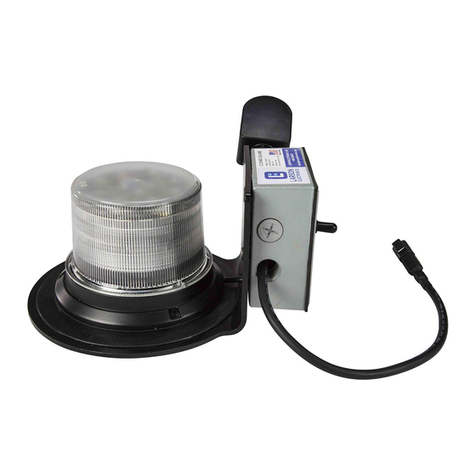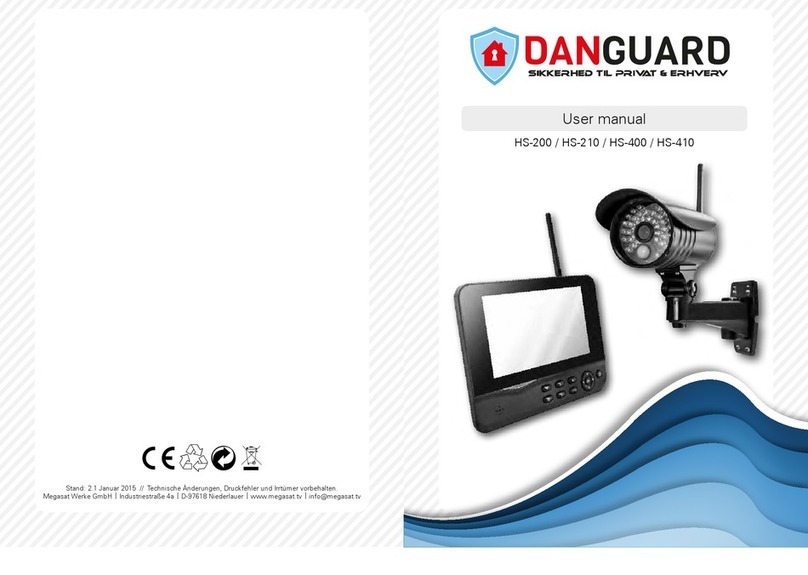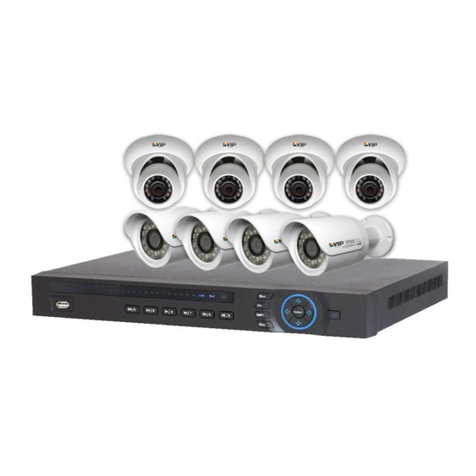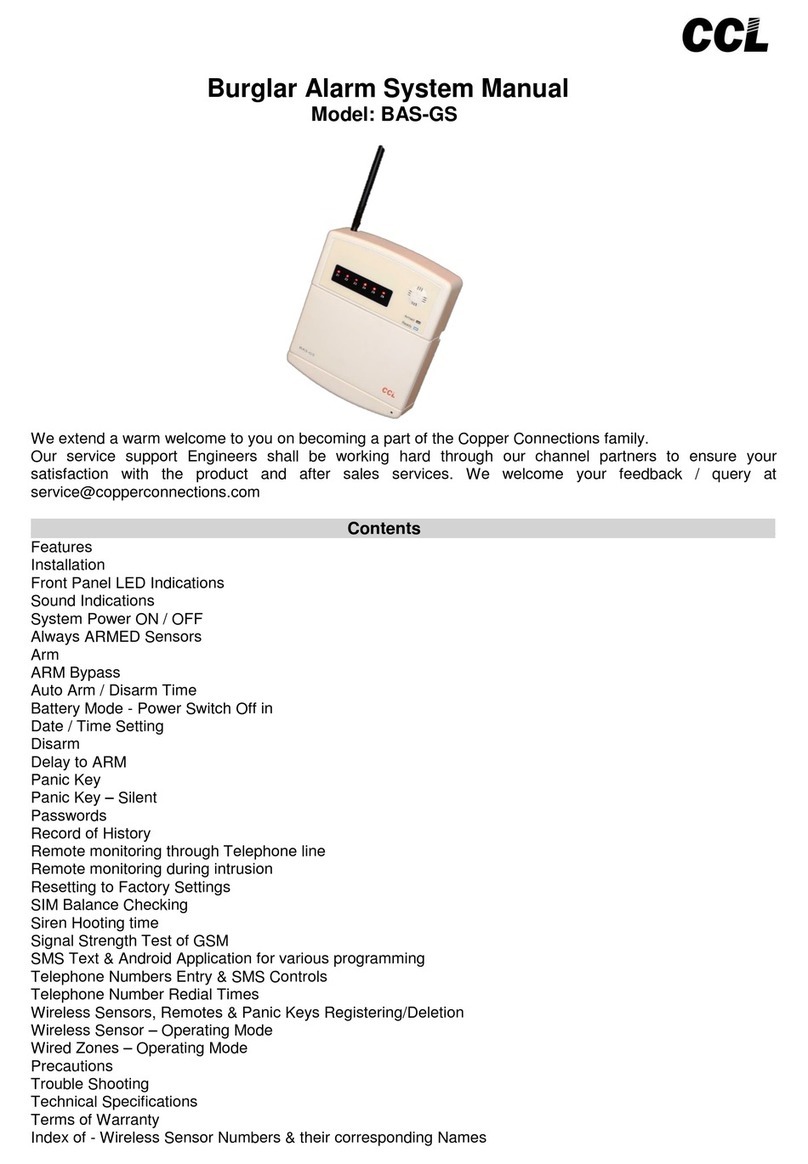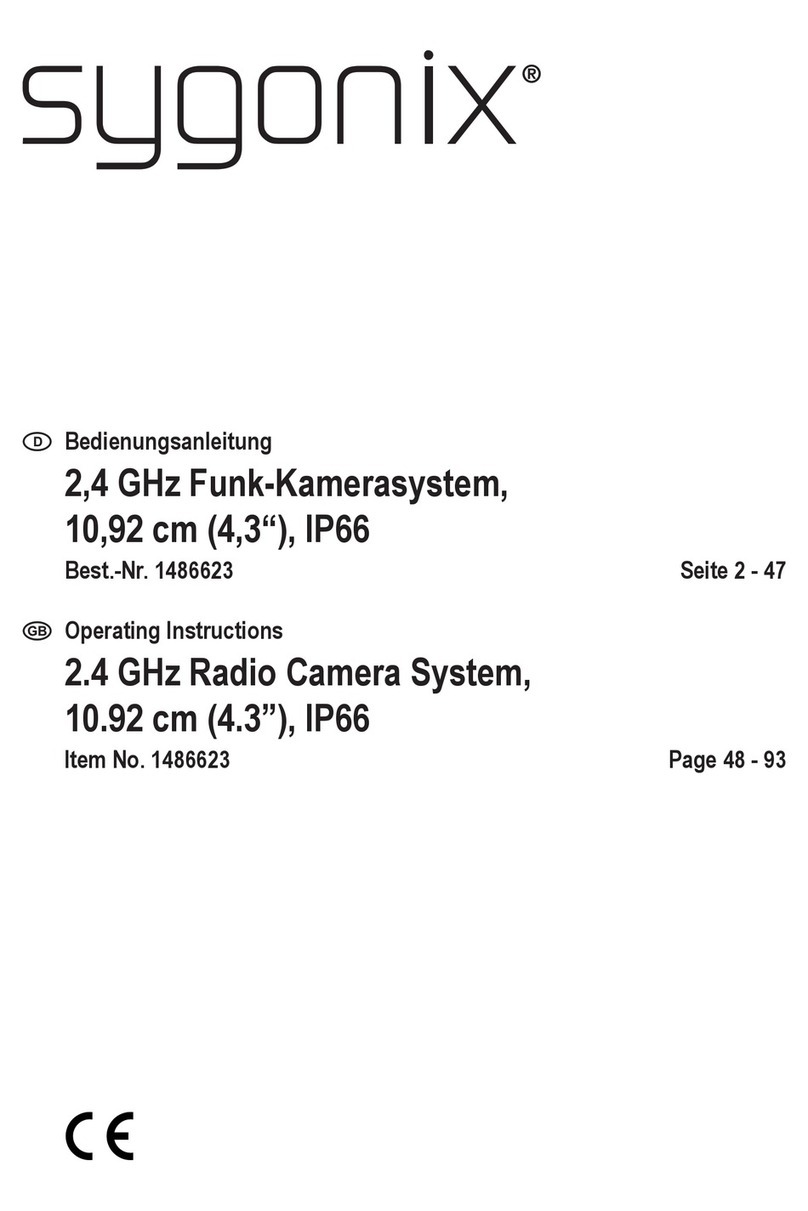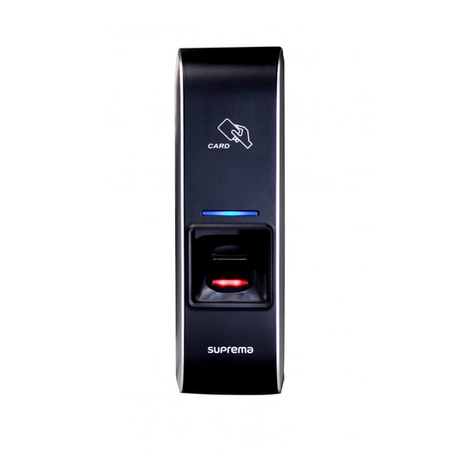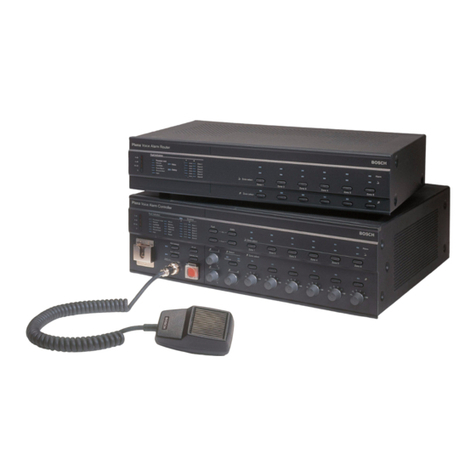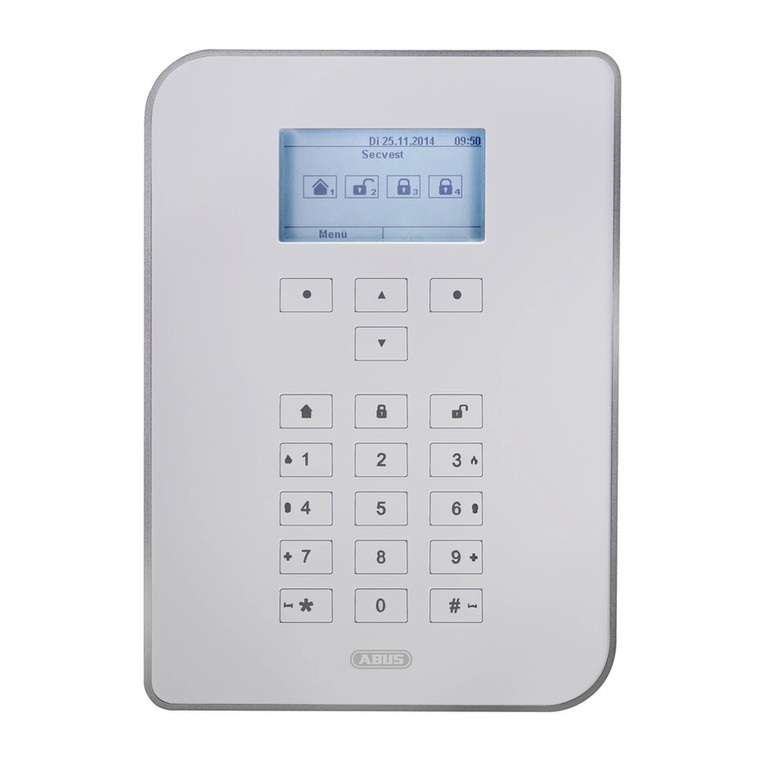Teledyne Detcon SW-A2V2-DV2 User manual

TELEDYNE DETCON MODEL SW-A2V2-DV2
Hazardous Duty Class 1 Division 2 Multi-tone Alarm Station
Operator’s Installation and Instruction Manual
Teledyne Detcon, Inc.
4055 Technology Forest Blvd. Suite 100
The Woodlands, Texas 77381
Ph.713.559.9200 / Fax 713.893.6729
www.teledynegasandflamedetection.com
December 3, 2019 • Document # 4572 • Revision 0.3

SW-A2V2-DV2
SW-A2V2-DV2 Instruction Manual ii
This page left intentionally blank

SW-A2V2-DV2
SW-A2V2-DV2 Instruction Manual iii
Table of Contents
1.0 Description................................................................................................................................................ 1
1.1 Strobe ................................................................................................................................................... 2
1.2 Horn...................................................................................................................................................... 2
1.3 Smart Battery Pack............................................................................................................................... 3
1.4 Quad Battery Charger (Optional)......................................................................................................... 3
1.5 RXT Wireless Transceiver................................................................................................................... 4
2.0 Installation................................................................................................................................................ 5
3.0 Operation.................................................................................................................................................. 7
3.1 Strobes.................................................................................................................................................. 7
3.2 Horn...................................................................................................................................................... 8
4.0 Service and Maintenance ........................................................................................................................ 9
4.1 Replacement of the battery pack .......................................................................................................... 9
5.0 Parts List................................................................................................................................................. 10
6.0 Specifications.......................................................................................................................................... 10
7.0 Warranty................................................................................................................................................ 11
8.0 Revision Log........................................................................................................................................... 11
Table of Figures
Figure 1 Basic Wireless Alarm Stations............................................................................................................... 1
Figure 2 Wireless Interconnect PCA.................................................................................................................... 1
Figure 3 Strobe..................................................................................................................................................... 2
Figure 4 Horn....................................................................................................................................................... 2
Figure 5 Battery Pack........................................................................................................................................... 3
Figure 6 Quad Battery Charger ............................................................................................................................ 4
Figure 7 Dimensional........................................................................................................................................... 5
Figure 8 Unit Wiring........................................................................................................................................... 6
Table 1 Strobe Patterns…………………………………………………………………………………………..7
Figure 9 Flash Pattern Rate Configuration………………………………………………………………………7
Table 2 Sound Signals……………………………………………………………………………………….…..8

SW-A2V2-DV2
SW-A2V2-DV2 Instruction Manual iv
Shipping Address: 4055 Technology Forest Blvd. Suite 100, The Woodlands Texas 77381
Mailing Address: P.O. Box 8067, The Woodlands Texas 77387-8067
Phone: 713.559.9200 • Fax: 713.893.6729 • www.teledynegasandflamedetection.com
This page left intentionally blank

SW-A2V2-DV2
SW-A2V2-DV2 Instruction Manual Rev. 0.3 Page 1 of 11
1.0 Description
The Teledyne Detcon SW-A2V2-DV2 Alarm Stations are wireless, battery powered alarm stations with a two
Strobes and a Horn that can provide 2 of 32 possible alarm tones. The unit is designed for installation and use
in corrosive work environments.
Figure 1 Basic Wireless Alarm Stations
The alarm station can be positioned almost anywhere, since the wireless ability of the unit means that there is
no need for running conduit or outside connections. The alarm station is powered by two internal battery packs.
Communication is performed via Detcon RXT-320 transceivers. Access to the unit is only necessary for general
maintenance and battery exchange/recharge.
Internal wiring between components runs through the Wireless Alarm Interconnect PCA(s). This PCA controls
the state of the alarms via communication with the Wireless Transceiver. When an alarm is triggered, the
wireless transceiver will provide the interconnect PCA with the signal(s) necessary to activate the proper
alarm(s).
Alarm 2
wiring Alarm 1
wiring
wiring to/from
Transciever
wiring to/from
Transciever
External
24VDC
connections
Rotary Switch
for Modbus
Address
Figure 2 Wireless Interconnect PCA

SW-A2V2-DV2
SW-A2V2-DV2 Instruction Manual Rev. 1.4 Page 2 of 11
The RXT-320 Transceiver has a rotary switch on the Wireless Alarm Interconnect PCA that is used to set the
Modbus Address of the alarm unit. Each Wireless Alarm Interconnect PCA must have a unique Modbus™
address to be recognized on the network. The alarm station address must be in the range of 0x80-0x8F. The
dial on the PCA sets the last digit (LSD) of the address, the first digit of the address is fixed at ‘8’ hex. The
Modbus™ address of the Interconnect PCA is utilized for monitoring the Battery.
1.1 Strobe
The alarm station warning light is configured with choice of dome colors such as amber, blue, clear, green,
magenta, or red. Dome guard is included. The rugged warning light is specifically designed for hazardous
locations or corrosive environments where a very bright visual signal is required.
Figure 3 Strobe
1.2 Horn
This range of light weight all GRP, explosion proof sounders has been designed with high ingress protection to
cope with the harsh environmental conditions found offshore and onshore in the oil, gas and petrochemical
industries. The Horn is capable of producing up to 125dB @ 1m output dependent upon the tone settings
(refer to the “Sound Signals” Table).
Figure 4 Horn

SW-A2V2-DV2
SW-A2V2-DV2 Instruction Manual Rev. 1.4 Page 3 of 11
1.3 Smart Battery Pack
The A2V1-DV2 and V2-DV2 Alarm Stations are powered by a battery pack that enables it to be remotely
mounted without the need for external cabling.
Figure 5 Battery Pack
The 12V 2900mAh Smart Battery Pack (Teledyne Detcon’s part number 976-0BP303-290) consists of
rechargeable Lithium-Ion batteries and is equipped with integrated safety electronics that include a fuel gauge,
voltage monitor, and current and temperature monitoring circuits. This “smart” circuitry continuously monitors
the battery’s condition and reports critical status information to the wireless transceiver via the Modbus™
registers. The battery packs are designed to plug into an 8-pin Beau connector on the Terminal Board that the
sensor is connected to. The battery Pack and Terminal Board are housed and sealed in Teledyne Detcon’s Class
I Div 1 Aluminum Condulet to protect them from exposure to outside elements. Operating periods before
recharge will vary based on alarm usage but can be as long as 5 months for the 12V 2900mAh battery pack.
Improper use of the battery pack may be hazardous to personnel or the environment and will void the warranty.
1.4 Quad Battery Charger (Optional)
Detcon’s Smart Battery Pack can be charged as needed using Detcon’s optional Quad Battery Charger which
can charge up to four battery packs at one time. The Quad Battery Charger comes with a plug-in AC/DC adapter
that plugs into a standard 120VAC outlet for power. The DC end of the adapter plugs into the DC power jack
of the charger providing 24VDC. The Quad Battery Charger has four charging ports, each with 8-pin Beau
connectors for battery pack connection. The ports and connectors are keyed to prevent incorrect positioning and
connection. Each port has its own “FAULT” LED indicator and “CHARGE” LED indicator and will display
either a red light or green light depending on the status of each battery being charged. Charging times will vary
depending on the charge state of each battery pack, but a full charge of a depleted battery pack can take up to 24
hours.

SW-A2V2-DV2
SW-A2V2-DV2 Instruction Manual Rev. 1.4 Page 4 of 11
Figure 6 Quad Battery Charger
When first powered on and with no battery packs connected to the charger, all the LED indicators on the Quad
Charger should be green. When a battery pack is seated into a charging port, the “CHARGE” LED will go from
green to red indicating the battery pack is not sufficiently charged. Once fully charged, the LED will go from
red to green and the battery pack is ready to be used.
The “Fault” LED should remain green indicating that there are no problems with the battery pack or charging
port. If the “Fault” LED turns red with the battery pack connected, then there is a problem or issue with the
battery pack and it should not be used and be removed immediately. If the “Fault” LED turns red without a
battery pack connected to the charge port, then there is a problem or issue with the port and that port should no
longer be used.
Battery packs can remain connected to the charger even after a full charge indication (Green “Charge” LED) is
shown due to the protection circuitry of the batter pack which prevents any overcharging issues.
1.5 RXT Wireless Transceiver
The wireless function of the alarm station is made possible by Teledyne Detcon’s RXT series wireless
transceivers. These transceivers transmit signal data such as analog 4-20mA DC or serial Modbus™ and can
support up to 32 devices. They operate at 2.4GHz and conform to non-licensed radio frequency appliance usage
around the world. Wireless network integrity and security is accomplished using direct sequence spread
spectrum wireless mesh technology. Wireless applications can be as simple as a single field device
communicating with a host controller or any number of field devices forming a network of subscribers. Every
device in the network is capable of functioning as a router and repeater for all other devices in the network. This
means that subscribers can “hop” through neighboring devices to communicate with each other thereby widening
network access points. This unique and innovative technology is designed to create a robust network that
automatically routes around congestion and line-of-sight obstacles while improving throughput as subscriber
device density increases.
Refer to the RXT-320 manual for more detailed information.

SW-A2V2-DV2
SW-A2V2-DV2 Instruction Manual Rev. 1.4 Page 5 of 11
2.0 Installation
NOTE: The wireless alarm station is a precision instrument and care should be taken when handling it.
The Wireless A2V2-DV2 Alarm Station is made to be mounted on a 2” or 3” diameter pipe. Two 3” U-bolts
with hardware are provided for mounting. The location for mounting the wireless alarm station should be
carefully selected. Occasional access to the unit will be necessary for battery replacement and maintenance.
The unit should be properly grounded according to local electrical codes and specifications. No other wiring is
necessary for these units, once the unit has been mounted, install the battery pack and the unit will begin normal
operation.
Figure 7 Dimensional
With the RXT-320 Transceiver, the Address Switch on the Wireless Interconnect PCA should be set to the
correct address for the alarm station. This switch is normally set at the factory. Each Wireless Alarm
Interconnect PCA must have a unique Modbus™ address to be recognized on the network. The alarm station
address must be in the range of 0x80-0x8F. The dial on the PCA sets the last digit (LSD) of the address, the
first digit of the address is fixed at ‘8’ hex. The Modbus™ address of the Interconnect PCA is utilized for
monitoring the Battery. For more information refer to the RXT-320 manual.
The A2V2 utilizes two batteries. Both batteries must be the same type. To install the battery packs, insure that
the area is de-classified. Remove the cover from the junction boxes. Remove the Battery Cap and install a
battery in each junction box. The batteries can only be installed one way, and orientation is mandated by the
battery supports and the connector. Insure that the batteries are completely seated and close the retaining lever
over the battery until it latches. The unit will power up and begin normal operation. Replace the cover on the
junction Boxes and insure that the covers are completely screwed down and secured by the cap-head screw.

SW-A2V2-DV2
SW-A2V2-DV2 Instruction Manual Rev. 1.4 Page 6 of 11
Figure 8 Unit Wiring
CAUTION: Explosion Hazard –DO NOT remove or replace lamps or plug-in modules unless power
has been disconnected or the area is free of ignitable concentrations.
CAUTION: Explosion Hazard –DO NOT disconnect while the circuit is live or unless the area is free
of ignitable concentrations.
CAUTION: Explosion Hazard –DO NOT connect or disconnect when energized.

SW-A2V2-DV2
SW-A2V2-DV2 Instruction Manual Rev. 1.4 Page 7 of 11
3.0 Operation
The SW-A2V2-DV2 Wireless Alarm Stations provide two strobes and a dual tone alarm horn. The wireless
alarm station is set to respond to alarms from the controlling unit. The controller/wireless network has
independent control over the strobes and the Horns, and they will be activated when the appropriate alarm is
activated.
3.1 Strobes
The strobes have 8 built-in light patterns with 3 pattern speeds. The default setting is selection 2 from the Strobe
Signals Table below at 60 FPM. To change the pattern selection or pattern rate:
1) Loosen the set-screw on the side of the housing (cable entry side) with a 1.5mm hex-key one full turn.
2) Remove the lens cover from the housing by turning the cover counter-clockwise. 3 120-degree spaced
reliefs are provided for a 3/8” spanner wrench if needed. If the cover will not unscrew, back out the set-
screw a few additional turns.
3) Loosen the captive Philips screw retaining the printed circuit board.
4) Slide out the PCB
5) Locate the pattern select DIP switch at SW1 and the adjacent pattern rate potentiometer. “On” is “1”.
Table 1 Strobe Patterns
PATTERN DESCRIPTION
SWITCH
PATTERN NAME
1
All five segments active. 100% duty cycle
000
Steady On
2
Light flashes at 66% duty cycle. 60/75/90 FPM
100
Flash
3
Light gradually fades on and off. 60/75/90 FPM
010
Swell
4
Three 10ms pulses with 10ms pauses. 60/75/90 FPM
110
Strobe Simulation
5
Simulated reflector rotate (smooth). 60/75/90 RPM
001
Rotate Clockwise
6
Simulated reflector rotate (smooth). 60/75/90 RPM
101
Rotate CCW
7
Simulated reflector rotate (smooth). Stop and reverse
at ±90° 60/75/90 RPM
011
Half-Rotate “Bounce”
8
Simulated dual light source reflector rotate (pinwheel)
60/75/90 RPM
111
Dual Rotate CW
Figure 9 Flash Pattern Rate Configuration

SW-A2V2-DV2
SW-A2V2-DV2 Instruction Manual Rev. 1.4 Page 8 of 11
3.2 Horn
The horn has up to 32 possible tone settings for use in different configurations. The default tone settings of the
horn are factory set. To change the tone settings of the horn, remove the rear cover from the horn, and set the
dip switches on the PCA according to the Sound Signals Table (Tone 3 is not used in this configuration). The
unit utilizes Tones 1 and 2, and the dip switches for Tone 1 and 2 should be set appropriately. The default setting
for TONE 1 is selection 7 (11001), and the default setting for TONE 2 is selection 3 (11101) from the Sound
Signals Table.
Table 2 Sound Signals
TONE FREQ/DESCRIPTION
SWITCH
TONE
1
Alt Tones 800/970 Hz at 1/4 sec
11111
2
Sweeping 800/970 Hz at 7Hz
11110
Fast Sweep (LF)
3
Sweeping 800/1000 Hz at 1 Hz
11101
Med Sweep (LF)
4
Continuous at 2850 Hz
11100
5
Sweeping 2400-2850 Hz at 7 Hz
11011
Fast Sweep
6
Sweeping 2400-2850 Hz at 1 Hz
11010
7
Slow Whoop
11001
Slow Whoop
8
Sweep 1200-500 Hz at 1 Hz
11000
Din Tone
9
Alt. Tones 2400/2850 Hz at 2 Hz
10111
10
Int. Tone of 970 Hz at 1 Hz
10110
Back-Up Alarm (LF)
11
Alt. Tones 800/970 Hz at 7/8 Hz
10101
12
Int. Tone at 2850 Hz at 1Hz
10100
Back Up Alarm (HF)
13
970Hz at 1/4 sec on 1 sec off
10011
14
Continuous at 970 Hz
10010
15
554Hz for 100ms / 440 Hz for 400ms
10001
French Fire Sound
16
Int. 660 Hz 150 ms on 150 ms off
10000
Swedish Fire Alarm
17
Int. 660 Hz 1.8 sec on 1.8 sec off
01111
Swedish Fire Alarm
18
Int. 660 Hz 6.5 sec on 13 sec off
01110
Swedish Fire Alarm
19
Continuous 660 Hz
01101
Swedish Fire Alarm
20
Alt 554/440 Hz at 1 Hz
01100
Swedish Fire Alarm
21
Int. 660 Hz at 7/8 Hz
01011
Swedish Fire Alarm
22
Int. 2850 Hz 150 ms on 100 ms off
01010
Pelican Crossing
23
Sweep 800-970 Hz at 50 Hz
01001
Low Freq. Buzz
24
Sweep 2400-2850 Hz at 50 Hz
01000
High Freq. Buzz
25
3 970Hz pulses 0.5on/0.5off, 1.5 off
00111
26
3 2850Hz pulses 0.5on/0.5off, 1.5 off
00110
27
Int. 3100 Hz 0.32s on / 0.68s off
00101
28
Spare/Customer Tone
00100
29
Spare/Customer Tone
00011
30
Spare/Customer Tone
00010
31
Spare/Customer Tone
00001
32
Spare/Customer Tone
00000

SW-A2V2-DV2
SW-A2V2-DV2 Instruction Manual Rev. 1.4 Page 9 of 11
4.0 Service and Maintenance
Visual Inspection
The Alarm Unit should be inspected annually:
•Inspect the unit for signs of corrosion, pitting, and water damage.
•Inspect the inside of the Junction Box(s) for signs of water accumulation and/or signs of corrosion.
•Check internal wiring to ensure there are no loose or pinched wires and all connections are clean and
tight.
Condensation Prevention Packet
A moisture condensation packet should be installed in every explosion proof Junction Box. The moisture
condensation prevention packet will prevent the internal volume of the J-Box fromcondensingand accumulating
moisture due to day-night humidity changes. This packet provides a critical function and should be replaced
annually. Detcon’s PN is 960-202200-000.
CAUTION: Explosion Hazard –DO NOT remove or replace lamps or plug-in modules unless power
has been disconnected or the area is free of ignitable concentrations.
CAUTION: Explosion Hazard –DO NOT disconnect while the circuit is live or unless the area is free
of ignitable concentrations.
CAUTION: Explosion Hazard –DO NOT connect or disconnect when energized.
4.1 Replacement of the battery pack
The Controller incorporates a ‘LOW BAT’ (low battery) fault message which will appear on the controllers
display for the associated alarm unit. This fault will appear when the battery voltage or the ‘state of charge’
drops below a preset threshold. Refer to the controller manual for more information.
NOTE
The safety approvals require removing the alarm unit to a non-hazardous area before
installing or changing out the batteries or battery pack.
1. Remove the cover from the Junction-box.
2. Unscrew battery bracket lid and swing the lid away from the battery pack.
3. Remove the battery pack from the Junction-box and replace with new battery pack.
4. Swing the lid back over the battery pack and re-tighten screws in battery bracket lid.
5. Replace the cover on the Junction-box.
CAUTION: Explosion Hazard –Batteries must ONLY be changed in an area free of ignitable
concentrations.
CAUTION: Explosion Hazard –Batteries must ONLY be recharged in an area free of ignitable
concentrations.

SW-A2V2-DV2
SW-A2V2-DV2 Instruction Manual Rev. 1.4 Page 10 of 11
5.0 Parts List
Detcon Part # Description
354-GLE6x6-024 24VDC Strobe, Ext Ground (x represents color of lamp)
Strobe colors: Red (2), Amber (4), Green (5), Blue (6), Magenta (7), and Clear (9)
356-DB3007-024 Model DB3B Horn
500-005146-000 24V Wireless Alarm Interconnect PCA
976-000320-316 RXT-320 Wireless Transceiver
976-0BP303-290 12VDC. 2900mAh Battery Pack
NOTE: Battery Packs are specific to units, when replacing battery packs replace only with the
same type.
6.0 Specifications
Input Voltage: Battery
Current : N/A
Mount: Wall Mount or 2~3” Pipe Mount
Environment Rating: Designed to meet NEMA 4 specifications
Area Classification: Designed for use in C1D2 Groups C, D locations
Ambient Temperature Range: -20°C to 60°C (rechargeable battery pack)
Dimensions: 34.17”H X 20.5” W X 14.1” D
Weight: 18lbs approx.
Dome Colors: Amber, Blue, Clear, Green, Magenta and Red
Light Source/Lamp Style: LED
Lamp Life: 60,000 Hours
Flash Rate/Minute: 60 default –adjustable 60/75/90
Sound Output: Up to 125dB(A) @ 1 meter (Tone dependent)
Duty Cycle Not rated for continuous duty (5-minute duty cycle)
Electrical Classification: Class I Division 2 Groups C, D T4 Tamb -20°C to +40°C

SW-A2V2-DV2
SW-A2V2-DV2 Instruction Manual Rev. 1.4 Page 11 of 11
7.0 Warranty
Teledyne Detcon Inc., as manufacturer, warrants under intended normal use each new SW-A2V2-DV2 Alarm
station to be free fromdefects in material and workmanship for a period of one year. The warranty period begins
from the date of shipment to the original purchaser and ends one year thereafter. All warranties and service
policies are FOB the Detcon Inc. facility located in The Woodlands, Texas.
8.0 Revision Log
Revision
Date
Changes made
Approval
0.0
03/27/15
Initial Release
LU
0.1
05/14/15
Correct manual document number
LU
0.2
03/02/16
Update information for correctness
MM
0.3
06/11/18
12/03/19
Added Caution to Section 2 and 4
Teledyne branding, programable strobes, dual tones
MM
JG
Shipping Address: 4055 Technology Forest Blvd. Suite 100, The Woodlands Texas 77381
Mailing Address: P.O. Box 8067, The Woodlands Texas 77387-8067
Phone: 713.559.9200 • Fax: 713.893.6729 • www.teledynegasandflamedetection.com
Table of contents
